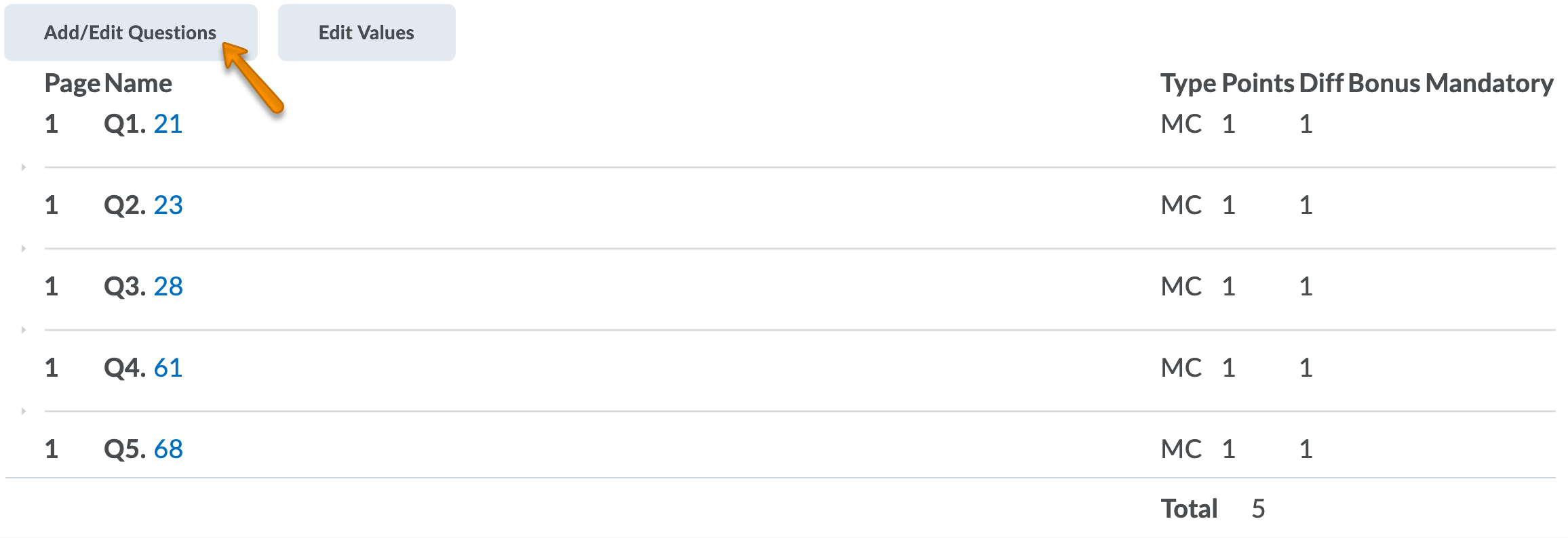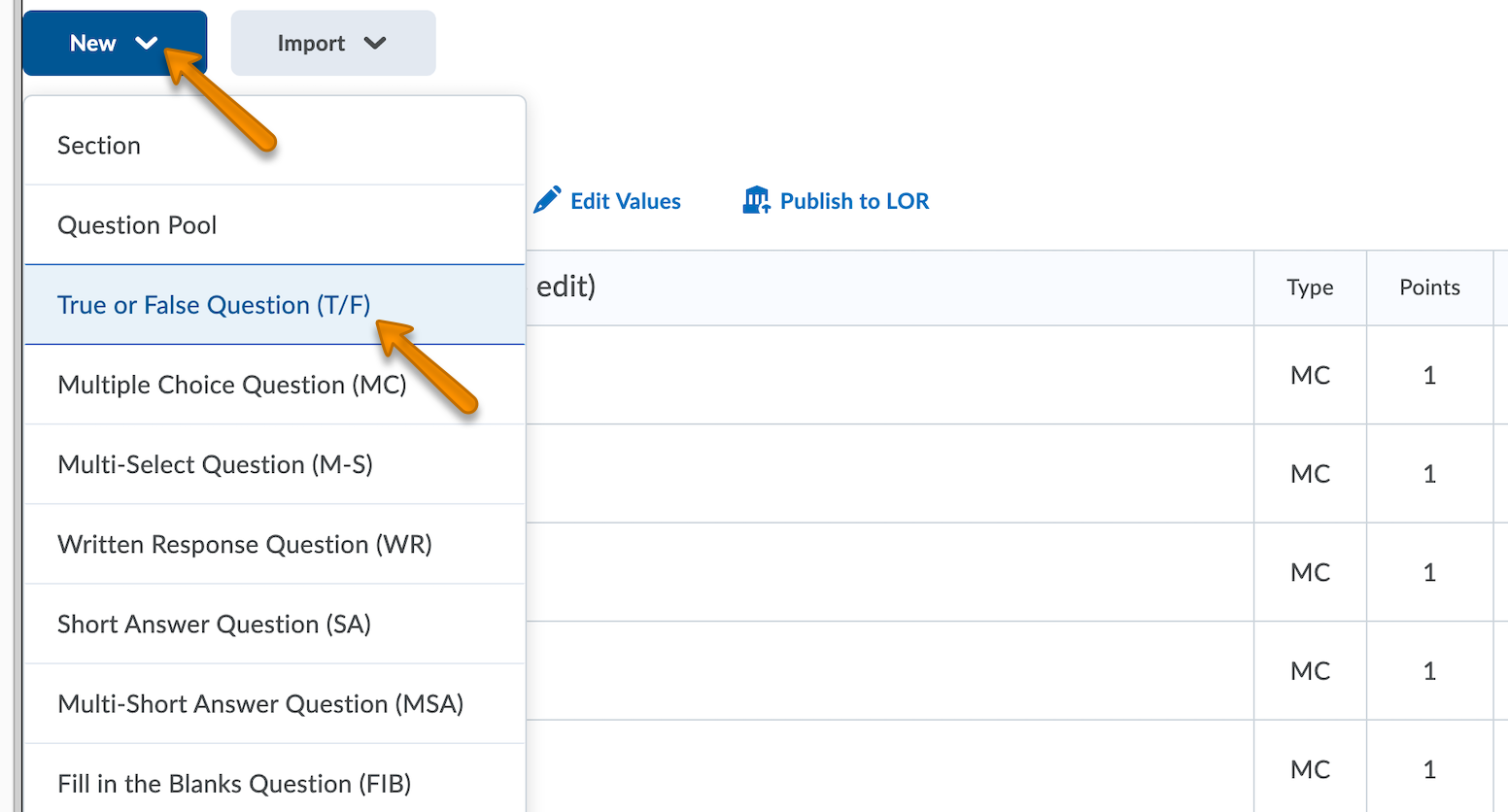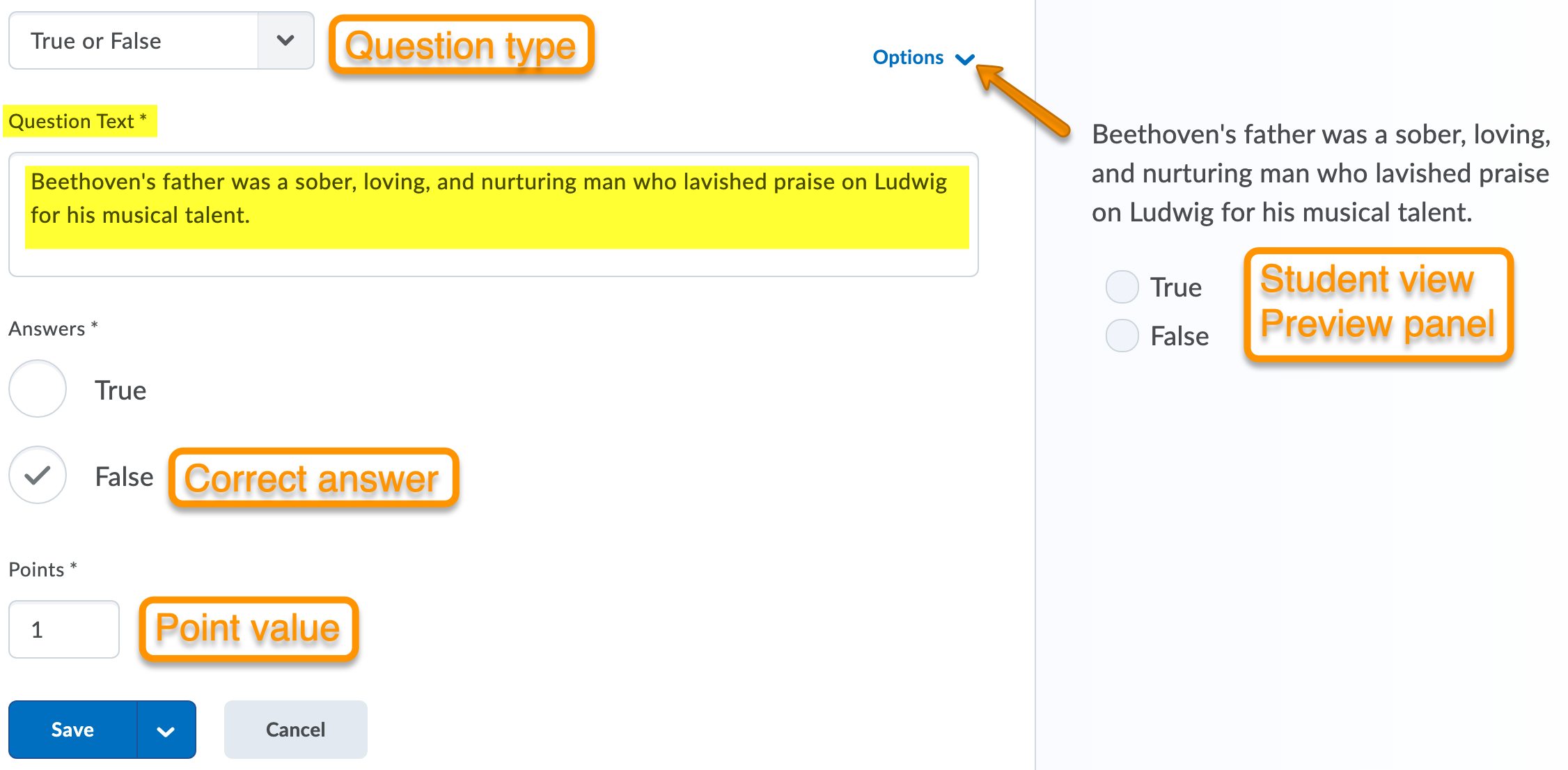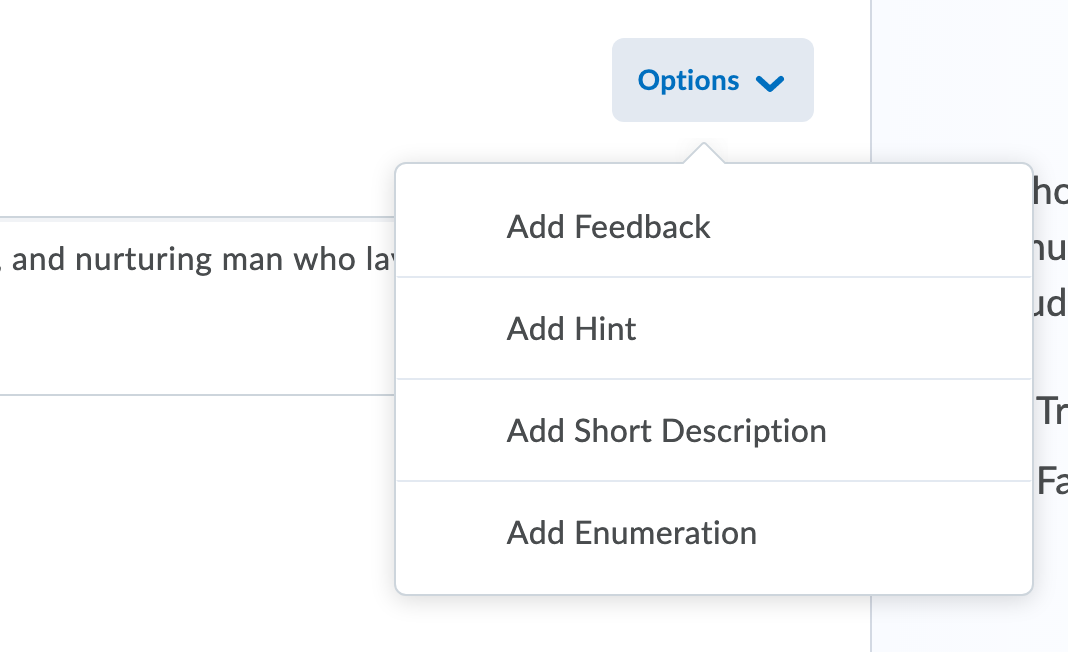Creating and Adding Questions to your Quiz
When you are creating or editing a Quiz, you will want to enter different types of quiz questions. This guide provides a simple explanation on how to create and add a question to your quiz, with a link to a more detailed guide on question types.
Helpful resources from D2L Brightspace (external site)
Quiz Terms and Question Types
When you create your quiz questions, you will have a variety of question types to choose from. Here is a comprehensive list of the question types available to you with a summarized explanation.
Brightspace Quiz terms:
- Section – Create a section that will contain multiple questions
- Question pool – Choose multiple questions that you have already created, and put then into your quiz
Question types:
- True or False (T/F) -True or false (T/F) questions present a statement which respondents must determine is correct or incorrect.
- Multiple Choice (MC) -Multiple choice (M/C) questions present a statement or question with a list of possible answers, in which learners must choose the best possible answer.
- Multi-Select (M-S) -Multi-select (M-S) questions require respondents to identify one or more correct answers in a list of possible answers. Unlike multiple choice (MC) questions, multi-select questions enable you to choose a grading format and allow users to select more than one answer.
- Written Response (WR) -Written response (WR) questions require respondents to write detailed answers in response to open-ended questions. You can enable users to respond in multiple sentences, paragraph answers, or mathematical explanations and calculations. Users can also respond in HTML code.
- Short Answer (SA) -Short answer (SA) questions require respondents to create one word or brief sentence answers in response to open-ended questions.
- Multi-Short Answer (MSA) – Multi-short answer (MSA) questions require respondents to answer a multi-solution question and input their answers into individual input boxes. Respondent’s answers are checked against each possible answer stored in the answer fields.
- Fill in the Blanks (FIB) -Fill in the blanks (FIB) questions require respondents to fill in one or more missing words for an incomplete sentence, statement, phrase, list, or key terminology.
- Matching (MAT) -Matching (MAT) questions require respondents to choose from a set of possible match choices from drop-down lists and correctly pair them with related items.
- Ordering (ORD) -Ordering (ORD) questions require respondents to arrange a series of items into a correct sequence or order.
- Arithmetic (2+2) -Arithmetic questions enable you to assess users’ knowledge and comprehension of mathematics and number theory.
- Significant Figures (x10) -Significant figures questions require respondents to answer in scientific notation and provide solutions that contain a specified number of significant figures.
- Likert (LIK) -Likert (LIK) questions measure subjective information such as personal opinions, knowledge, abilities, and attitudes. Likert questions enable you to create surveys that evaluate the intensity of respondents’ feelings towards statements presented to them.
Click here to see D2L’s detailed instructions on how to create each question type
Create a quiz question
- Enter your quiz Edit mode. Click on the button to Add/Edit Questions.

- Click New and select the type of question you want to create.

- Enter the required information for your question. Depending on what question type you are using, you will have different options available to you. This example shows a true/false question. Refer to the explanations on this link to learn more about each question type.

- The Preview Panel on the right will show you the student’s view of the question. Be sure to include the Correct Answer and Point Value. Click on Options if desired, to add more information to your question.
From the Options drop-down list you can specify the following:
- To add feedback for each answer, select Add Feedback.
- To add a hint to the question, select Add Hint.
- To add a percentage weight for each answer, select Add Custom Weights. You can set different weights for each answer if some solutions are more correct than others.
- To add a short description to the question, select Add Short Description. This will be visible to students.
- To select how you want your options to be enumerated, select an option from the Add Enumeration > Enumeration drop-down list.

Click Save when you are finished.

